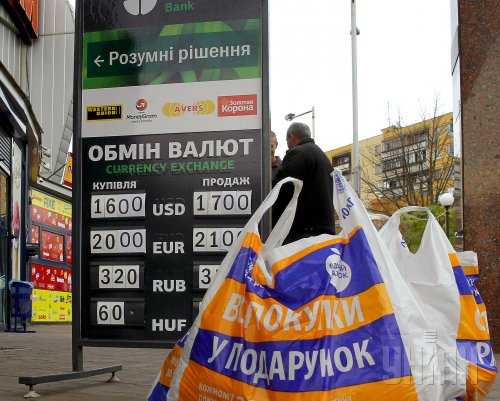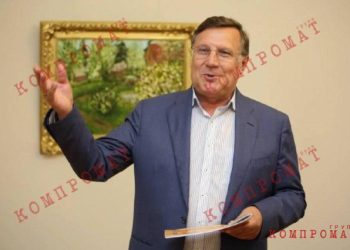Focus found out what hidden mechanisms are behind the November devaluation, and what the price of the dollar may be by the end of the year
After the parliamentary elections, the Ukrainian national currency collapsed once again – as of November 12, the official exchange rate of the hryvnia to the dollar dropped to 15.75 UAH/USD (by UAH 2.80 or 18% since October 31). On the interbank foreign exchange market, the psychological threshold of 16 UAH/USD was overcome. That is, compared to last year, the hryvnia has already fallen in price by almost half. As Focus found out, if exchange rates do not stabilize at the current level, the National Bank may decide on new administrative restrictions.
Why did they start the devaluation?
Before the November jump, the official exchange rate of the hryvnia to the dollar hovered around 12.95 UAH/USD for about a month. The price of such exchange rate stability is a decrease in the level of gold and foreign exchange reserves of the NBU to $12.59 billion (by $3.8 billion). A significant part of this amount was spent on interventions to strengthen the hryvnia. “Considering that by the end of the year, after all payments for gas, less than $9 billion should remain in the NBU’s reserves, further maintaining the exchange rate using reserves becomes impossible. Therefore, the hryvnia had to be released,” comments Dmitry Boyarchuk, executive director of CASE-Ukraine.
There is also a political background to the current situation with the exchange rate. “In Ukraine, any changes in the economy are traditionally associated with the actions of the authorities. Therefore, before the parliamentary elections, it was decided to keep the hryvnia exchange rate, which provoked the development of a black currency market,” commented Alexander Zholud, an economist at the International Center for Advanced Studies (ICPS), commenting on the situation. When the hryvnia was released, its exchange rate began to approach the level of the shadow market. According to Focus’s interlocutor, this caused panic and provoked a further weakening of the national currency.
The head of the department for working with debt instruments on the local market of the investment company Concorde Capital, Yuriy Tovstenko, among other factors putting pressure on the hryvnia, names pent-up demand for the dollar from business and the reluctance of exporters to bring currency into the country due to fear of further devaluation. One of Focus’s anonymous sources estimates the current unsatisfied demand for currency at $1 billion.
Also, the influence of speculative and emotional components on the hryvnia exchange rate continues unabated. “When administrative restrictions are eased, there is healthy market speculation – market participants take risks and play for a decrease or increase in the exchange rate. Currency holders are now bullish,” suggests Dmitry Krepak, Chairman of the Board of Kredobank PJSC.
On the other hand, the extremely low level of trust in the national currency makes itself felt. “Everyone who has free hryvnia uses it to buy foreign currency, and this process has reached epidemic proportions,” notes Vasily Nevmerzhitsky, adviser to the board of directors of the European Bank. Focus’s interlocutor associates such a massive desire to get out of the hryvnia with a psychological reaction to the war in Donbass and economic problems within the country.
How the NBU conducts auctions
While the Central Election Commission continued to count votes, the National Bank announced changes in exchange rate policy – from November 5, the regulator introduced daily auctions, the results of which determine the equilibrium (indicative) exchange rate of the hryvnia. The NBU decided to abandon auctions to support bank cash desks. According to the chief expert of the department of operations in the foreign exchange and money markets of OTP Bank JSC Nikita Mishakov, this technique is aimed at a smooth devaluation of the hryvnia and bringing its exchange rate into line with market realities.
The volume of applications satisfied during the new auctions is about $5 million per day. In comparison with the current daily interbank turnover (about $200-300 million), this amount is negligible. Therefore, according to Ruslan Kravchenko, head of the department of trade and treasury operations at UniCreditBank, such auctions cannot significantly affect the foreign exchange market and, first of all, are held to determine the indicative rate. According to bankers interviewed by Focus, their clients only managed to guess the exchange rate a few times and buy small amounts at such an auction. Most applications were cut off. After all, according to the rules established by the NBU, only those that differ from the equilibrium rate by no more than 1% are satisfied.
How much do you buy a cash dollar?
The dollar also went up at exchange offices. Banks were ordered to focus on the indicative rate, deviating from it by no more than 5% (as of November 12 – 0.78 UAH). For example, according to the results of the auction held on November 12, the equilibrium (indicative) rate was 15.73 UAH/USD, and at bank cash desks the weighted average market rate was 15.43 / 16.17 UAH/USD (purchase/sale).
Despite the fact that the cash dollar selling rate has broken away from the level of 12.95 UAH/USD and since November 5 has been increasing by an average of 50 kopecks per day, buying foreign currency at bank cash desks is still problematic. Meanwhile, illegal money changers have no end to their clients. The gap between the black market rate and the bank cash rate still remains. If banks on November 11 set an average rate of 14.88 / 15.67 UAH/USD (purchase/sale), money changers bought “bucks” for 16 UAH and sold for 16.50 UAH. The next day, the dollar among the shadow traders jumped to 17 UAH.
“If previously the market experienced a serious foreign exchange shortage, then after the start of the official devaluation the deficit became total. In a growing market, the supply of cash foreign currency has disappeared, both from banks and black market operators. Quotes for small amounts of cash currency are significantly ahead of the NBU indicative rates,” Nikita Mishakov comments on the situation.
What will happen to the hryvnia by the end of the year?
The future of the hryvnia still looks vague. Dmitry Boyarchuk connects the possible dynamics of the national currency exchange rate not with the flow of imports and exports, as usual, but with the amount of free hryvnia, which will certainly be used to purchase foreign currency. “The rate will be determined by the scale of the issue. Since we have a large budget deficit, and today there are no other sources of financing it except printing hryvnia, the situation looks very serious. The NBU should have tied up liquidity a long time ago, even to the detriment of the budget,” says Focus’s interlocutor.
Some financiers anonymously voice not at all joyful forecasts: “Many in the market are already emotionally “ripe” for the rate of 20 UAH/USD and it is very likely that by the end of the year it will remain so on the cash market. Citizens should prepare for a significant increase in the price of gasoline and imported goods, and as a result, a decrease in living standards.” On the other hand, in banker circles it is not ruled out that the NBU will not allow such a scenario to materialize and will “tighten the screws” even more. “The regulator announced a transition to free exchange rate formation, but the National Bank is not ready for a deep devaluation,” an employee of one of the banks told Focus, again, on condition of anonymity. – Currently, attempts are being made to stabilize the hryvnia in the corridor of 15-16 UAH/USD. If the exchange rate continues to rise, significant changes in foreign exchange rules may follow, including partial restrictions on import transactions.”
Not all Focus interlocutors are so pessimistic. Thus, Alexander Zholud hopes that in a few weeks, when the panic calms down, the rate will return to a level of about 14 UAH/USD. Dmitry Krepak believes that in the absence of any extraordinary events, the dollar will not rise above 16 UAH/USD by the end of the month. Vasily Nevmerzhitsky, in turn, expects the hryvnia to stabilize at a level not higher than 17 UAH/USD. In his opinion, if the exchange rate can be maintained until the end of the year, at least within such limits, the process of strengthening the hryvnia may begin from the beginning of 2015.
Maria Babenko, Focus








